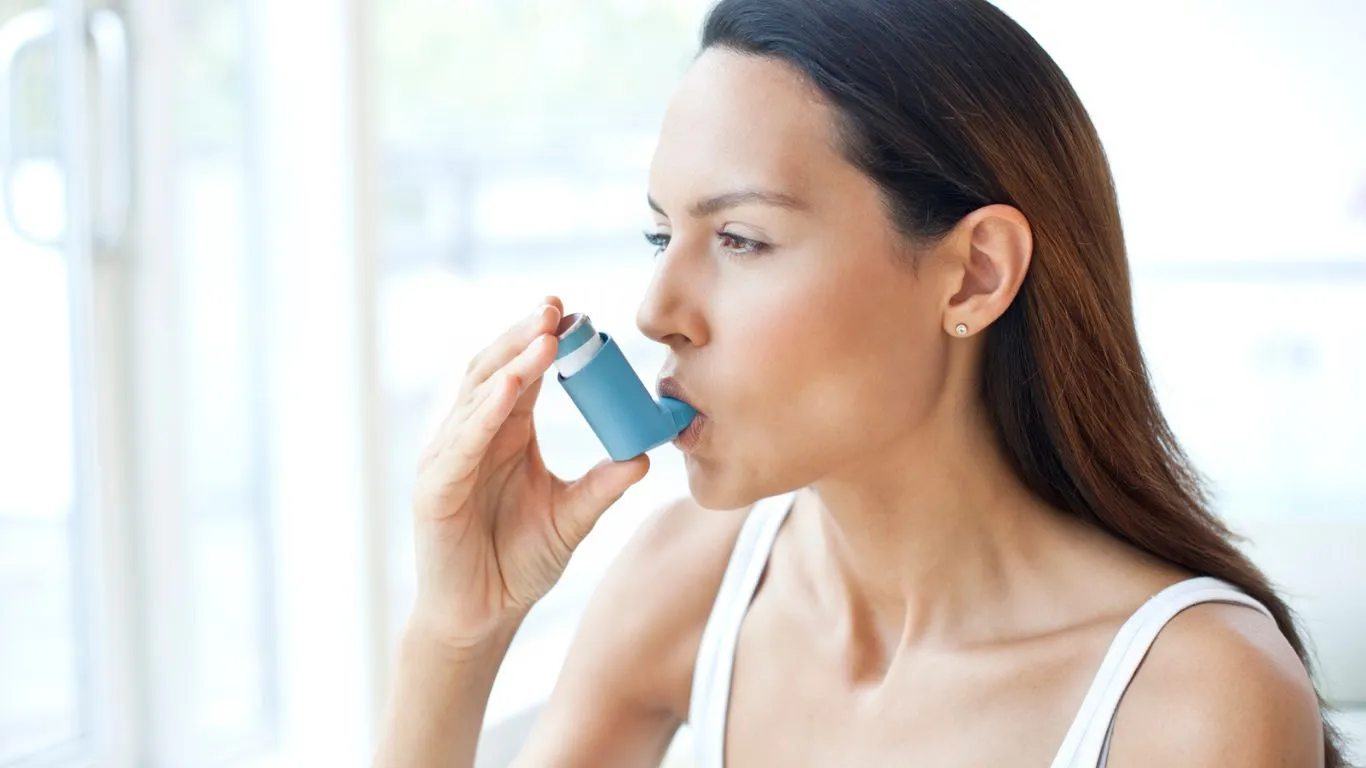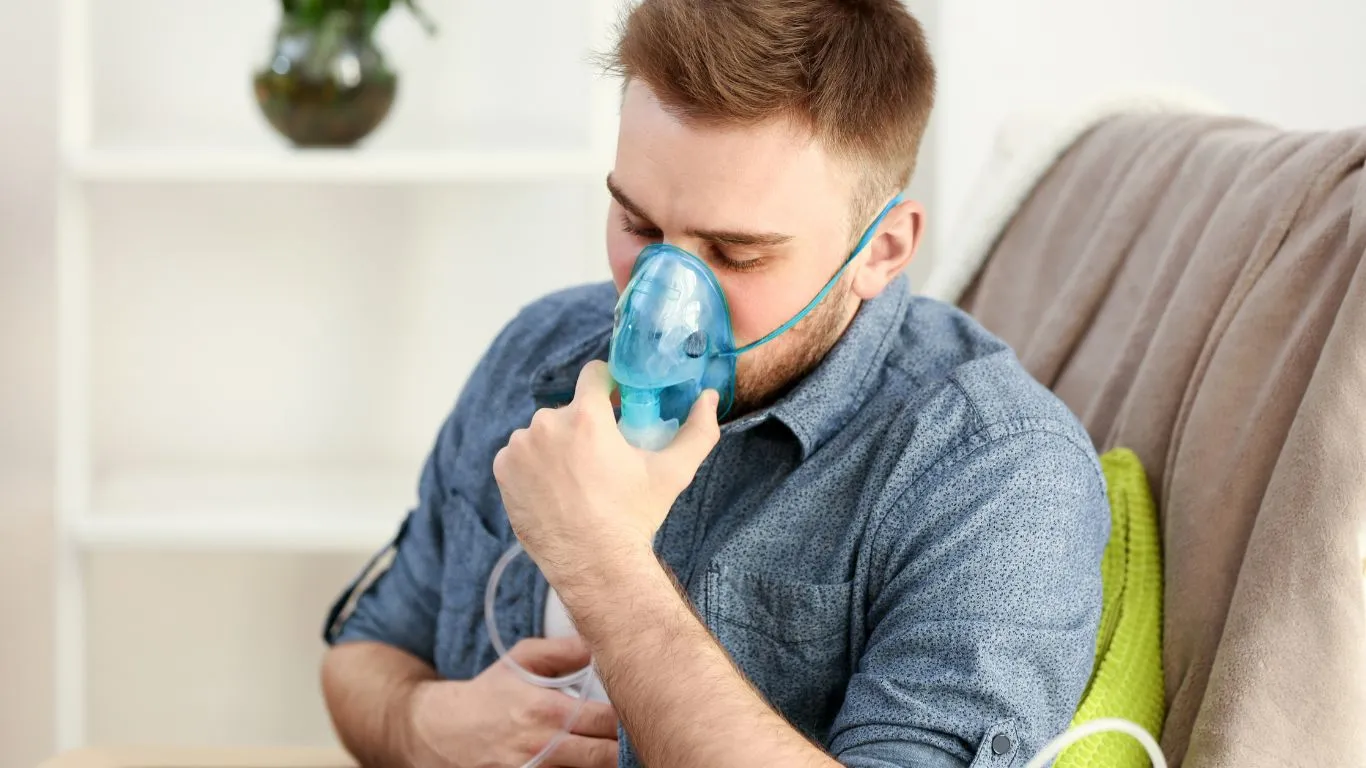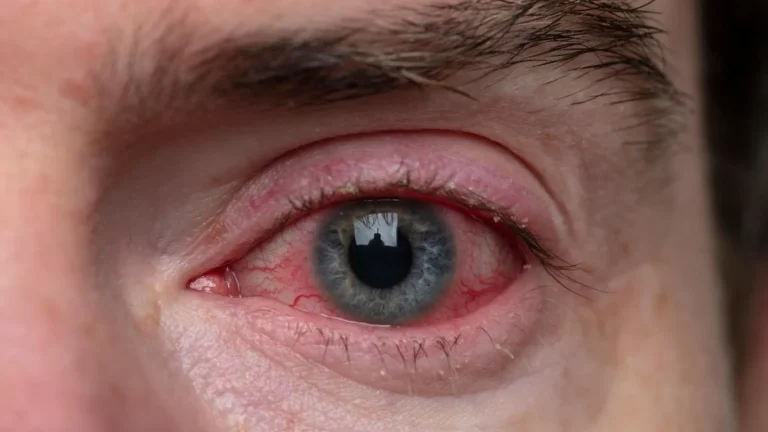Can Asthma Cause Shortness of Breath After Eating? Powerful Tips to Manage It
As someone who has worked closely with asthma patients over the years, I’ve come across a number of questions and concerns about asthma and its various triggers. One question that frequently pops up is: Can asthma cause shortness of breath after eating? It’s a great question, and it’s one that deserves a thorough look. You might be wondering, “Why does eating trigger shortness of breath? Isn’t asthma only related to things like exercise or allergens?” Well, the relationship between asthma and post-meal breathing difficulties is more common than many realize, and it involves a few key factors you may not have thought of. Let’s dive into it.
Understanding Asthma and Its Triggers

To get a better idea of how asthma can cause shortness of breath after eating, we need to first understand what asthma is. At its core, asthma is a chronic condition where the airways become inflamed and narrowed, making it harder to breathe. This inflammation can result in symptoms like wheezing, coughing, chest tightness, and shortness of breath. It can be triggered by a variety of factors, including allergens, exercise, cold air, and even stress.
But what about food? How can something as natural as eating lead to breathing difficulties? Well, it turns out that there are several ways in which asthma and eating are connected. It’s not always as straightforward as food allergies or sensitivities, though those can play a role too.
The Gut-Asthma Connection: How Your Digestive System Affects Breathing
One of the most common explanations for why asthma can cause shortness of breath after eating has to do with the way your digestive system interacts with your respiratory system. You see, your digestive system and your lungs are closely linked by a process called gut-lung axis. When you eat, your body diverts blood and energy to the stomach and intestines to aid in digestion. This can sometimes have unintended effects on the lungs.
For example, if you eat a large meal, the stomach expands and presses against your diaphragm. The diaphragm is a muscle that helps you breathe, so when it’s compressed, it can make it harder for your lungs to expand fully. This is especially true for those with asthma, where the airways are already sensitive. The added pressure from a full stomach can trigger or worsen asthma symptoms, such as shortness of breath.
So, if you’ve ever noticed that after eating a heavy meal, you’re gasping for air or feeling tightness in your chest, this might be why. It’s not just in your head—your body is literally reacting to the extra pressure and strain on your respiratory system.
Food-Related Triggers for Asthma

Not all foods affect everyone with asthma, but certain foods have been known to trigger symptoms in some individuals. Even if you don’t have a full-fledged food allergy, certain ingredients can still cause your asthma to flare up. Here are some common food-related triggers:
- High-fat foods: Eating foods that are high in fats, especially unhealthy fats, can exacerbate inflammation in the body, including in the airways. For asthma sufferers, this can make it harder to breathe.
- Food allergens: Things like peanuts, dairy, or shellfish can cause allergic reactions in some people. These reactions can include swelling of the airways, leading to shortness of breath or an asthma attack.
- Histamine-rich foods: Foods like aged cheese, cured meats, and fermented products can cause histamine release, which can lead to inflammation and narrowing of the airways, worsening asthma symptoms.
- Gastric reflux: Acid reflux (GERD) is common in asthma sufferers, and it can be triggered by certain foods, especially spicy or fatty meals. Acid from the stomach can irritate the airways and make breathing difficult.
It’s not always easy to pinpoint which foods are the culprits, but keeping a food diary and tracking your asthma symptoms can help you identify patterns. You might notice that certain foods are more likely to trigger shortness of breath or other asthma-related symptoms after meals.
The Role of Food Sensitivities and Allergies
Now, let’s talk about food sensitivities and allergies. These are a bit different from the general triggers mentioned above. Food allergies, in particular, can lead to immediate and sometimes severe reactions, such as swelling in the throat, hives, or even anaphylaxis. For people with asthma, food allergies can significantly increase the risk of an asthma attack or make breathing more difficult, even if the allergy isn’t directly related to the lungs.
Common food allergies that may affect asthma include:
- Peanuts
- Tree nuts
- Dairy products
- Shellfish
- Eggs
If you have known food allergies, it’s crucial to avoid the offending foods altogether to prevent an asthma flare-up. Even trace amounts of allergens can cause reactions, so always be vigilant when it comes to checking food labels and asking about ingredients.
Asthma and Eating Habits: Why Timing and Portion Sizes Matter

When it comes to managing asthma symptoms after meals, it’s not just about what you eat, but also when and how much you eat. Overeating or eating too quickly can put extra pressure on your stomach and diaphragm, which might lead to that uncomfortable sensation of shortness of breath.
Smaller, more frequent meals are often recommended for those with asthma. This can help prevent that heavy feeling of a full stomach, which, as we discussed earlier, can put pressure on your diaphragm and worsen asthma symptoms. Additionally, taking your time while eating can help ensure that you’re not overloading your digestive system too quickly, which can trigger symptoms like bloating or indigestion that may exacerbate asthma.
In the next part of this article, we’ll explore more strategies to manage asthma symptoms after eating and dive deeper into the role of exercise, lifestyle, and other factors. But for now, remember that managing asthma isn’t just about medication—it’s about understanding all the factors that can affect your respiratory health, including your eating habits and food choices.
Strategies to Manage Shortness of Breath After Eating

Now that we’ve covered how asthma can lead to shortness of breath after eating, let’s talk about some practical strategies to manage this issue. After all, no one wants to feel winded or uncomfortable after a meal, right? Based on my experience with asthma patients, I’ve learned that managing these symptoms often involves a combination of lifestyle adjustments, dietary choices, and mindful eating habits. Here’s how you can start addressing it:
1. Opt for Smaller, More Frequent Meals
As mentioned in Part 1, the size of your meal plays a huge role in how your body responds. Larger meals put pressure on your stomach, which can push up against your diaphragm and restrict your breathing. This pressure can worsen asthma symptoms, making it harder to breathe. One strategy I always recommend is switching to smaller meals spread throughout the day. Instead of having three large meals, try eating five to six smaller meals.
Not only does this reduce the physical pressure on your lungs, but it also helps with digestion, preventing that heavy, bloated feeling. This way, you’ll avoid the sudden influx of food that could trigger a breathing episode. As a bonus, smaller meals can help maintain your energy levels throughout the day, so it’s a win-win!
2. Focus on Your Posture During Meals
Did you know that how you sit while eating can impact your asthma symptoms? If you tend to slouch or hunch over your plate, the space for your lungs to expand becomes more restricted. This can lead to discomfort or even shortness of breath. To avoid this, try sitting up straight while eating. A good posture gives your diaphragm enough room to move freely, which can reduce the chances of feeling winded after a meal.
It may sound simple, but it’s a little change that can make a significant difference. Plus, proper posture improves digestion, which could also help with any stomach discomfort or bloating that might be exacerbating your breathing problems.
The Impact of Foods and Food Preparation Methods on Asthma

Another important factor that influences asthma symptoms after eating is the way the food is prepared. Some cooking methods can actually aggravate asthma, while others are more asthma-friendly. Let’s break it down.
3. Avoid Foods That Can Trigger GERD
Gastroesophageal reflux disease (GERD) is something I see quite often in asthma patients. GERD occurs when stomach acid flows back into the esophagus, which can irritate the airways and trigger asthma symptoms. Certain foods, especially fatty or spicy foods, can increase the chances of experiencing reflux after eating.
As someone who’s seen the connection between asthma and GERD, I recommend avoiding trigger foods such as:
- Spicy dishes
- Fried and greasy foods
- Citrusy foods (like oranges or tomatoes)
- Caffeinated beverages (coffee, tea, soda)
- Chocolate and mint
Instead, try to focus on a more balanced, gentle diet that’s less likely to irritate the stomach. Opting for grilled or baked foods over fried ones can also help reduce the chances of triggering reflux, keeping your airways clear and your asthma symptoms in check.
4. Cooking Techniques to Consider
When it comes to asthma-friendly cooking, certain methods can be better than others. Steaming, boiling, and baking are all great choices when it comes to food prep, as they preserve the nutrients in your food while also being easy on your digestive system. On the other hand, frying and grilling at high temperatures can produce smoke and fumes that may aggravate asthma symptoms, so try to avoid cooking methods that involve excessive heat or oil.
Incorporating more plant-based foods, which are often lower in fat, can also help reduce inflammation in the body. Think of foods like leafy greens, vegetables, fruits, and legumes. These foods provide essential nutrients that can support your immune system and help keep asthma symptoms at bay.
Exercise and Physical Activity: Balancing Asthma and Eating

After a meal, many people feel like a nap is in order, but for those with asthma, rest isn’t always the best solution. Gentle exercise can actually help you manage asthma symptoms better, even after eating. However, the key here is to exercise at the right time and in the right way.
5. Wait Before Exercising
It’s important to wait a little while before engaging in any physical activity after eating. Exercise can be a great way to strengthen your lungs and improve breathing, but jumping into a workout immediately after eating can lead to discomfort or worsen shortness of breath. The general rule of thumb is to wait at least 30-60 minutes after eating before you begin any strenuous activity.
That said, lighter, low-intensity activities like walking or stretching right after meals can be beneficial. These exercises promote circulation and digestion, without putting too much strain on your body. Plus, they can help regulate your breathing without triggering asthma symptoms.
6. Consider Breathing Exercises
Breathing exercises are one of my favorite tools for asthma management. These exercises help you control your breath and increase lung capacity, which is essential if you’re trying to avoid shortness of breath after meals. Techniques like pursed-lip breathing and diaphragmatic breathing can be incredibly helpful, especially if you feel winded after eating. Incorporating these exercises into your routine can help improve your overall lung function, making it easier to breathe no matter what you’ve eaten.
It’s also important to remember that stress can trigger asthma symptoms, so taking a few minutes to practice deep breathing after a meal can also help you relax and reduce any tension that may be affecting your lungs.
By integrating these tips into your daily routine, you’ll be in a better position to manage asthma symptoms triggered by eating. The key is to find a combination of eating habits, lifestyle changes, and mindful strategies that work for you. In the next section, we’ll discuss how medications and medical interventions play a role in managing these symptoms and keeping asthma in check. But for now, remember that you’re not alone in this. By being proactive, you can definitely improve your quality of life and breathe easier after meals.
Medications and Treatment Options for Asthma-Related Shortness of Breath After Eating

Now that we’ve covered the lifestyle and dietary strategies to manage asthma-related shortness of breath after eating, let’s talk about something equally important: medications. Asthma medications play a vital role in controlling symptoms and ensuring that your lungs stay as healthy as possible. As someone who has helped patients manage their asthma for years, I know how critical the right treatment plan is when it comes to preventing episodes and reducing the severity of symptoms. In this section, we’ll discuss the role of medications in keeping asthma under control, specifically in relation to eating and meal-induced triggers.
1. Inhalers: The First Line of Defense
For many asthma sufferers, inhalers are the first line of defense when symptoms like shortness of breath strike. These inhalers typically fall into two categories: rescue inhalers and maintenance inhalers. A rescue inhaler (or reliever inhaler) contains a bronchodilator like albuterol, which helps relax the muscles around the airways, opening them up to allow more airflow. If you find yourself struggling to breathe after eating, a rescue inhaler can help relieve that tightness in your chest.
However, it’s essential to understand that rescue inhalers are meant for immediate relief. They are not a long-term solution. On the other hand, maintenance inhalers are designed to be used daily to control inflammation and prevent asthma flare-ups. These often contain corticosteroids or long-acting bronchodilators that help keep your airways clear and reduce the likelihood of an asthma attack, especially after meals.
In my experience, it’s important to work closely with your healthcare provider to determine the right combination of inhalers and medications that suit your specific needs. Don’t hesitate to discuss any post-meal symptoms or challenges you’re facing with your doctor. This will help them customize your treatment plan more effectively.
2. Antihistamines for Allergy-Induced Asthma Symptoms
Sometimes, asthma symptoms after eating can be triggered by food allergies. If you suspect that certain foods are causing allergic reactions that worsen your asthma, antihistamines might be a helpful addition to your medication regimen. These medications block the effects of histamine, a substance released during allergic reactions that can cause inflammation and constriction of the airways.
Common antihistamines, such as loratadine (Claritin) or cetirizine (Zyrtec), can help reduce allergy-related asthma symptoms, including shortness of breath. However, it’s crucial to talk to your healthcare provider before adding any new medication, especially if you’re already on asthma treatment. Some antihistamines can interact with other drugs, so you want to make sure your combination therapy is safe and effective.
3. Long-Term Control Medications
For those who experience frequent asthma symptoms, long-term control medications are often necessary. These include inhaled corticosteroids (ICS), leukotriene modifiers, and long-acting beta-agonists (LABAs). These medications work over time to reduce airway inflammation, making your airways less sensitive to triggers like food, allergens, and exercise.
Inhaled corticosteroids are the most common and effective long-term medication for asthma. They reduce inflammation in the airways, which can help prevent post-meal asthma flare-ups. Similarly, leukotriene modifiers such as montelukast (Singulair) can help control inflammation and reduce the likelihood of asthma attacks after eating.
If your asthma symptoms are more persistent, your healthcare provider may suggest combining an inhaled corticosteroid with a long-acting bronchodilator for better control. These combinations can help prevent symptoms before they even start, especially after meals or other known triggers.
How Lifestyle Factors Affect Asthma Management

In addition to medication, certain lifestyle factors can have a huge impact on your ability to manage asthma and its symptoms, including shortness of breath after eating. I’ve seen firsthand how small changes in lifestyle can make a big difference in overall asthma control. Let’s look at a few important factors to consider.
4. Weight Management
Being overweight can exacerbate asthma symptoms for several reasons. Extra weight can put more pressure on the diaphragm, making it harder to breathe. Additionally, obesity is associated with increased inflammation in the body, which can worsen asthma. If you struggle with post-meal shortness of breath, maintaining a healthy weight can help reduce the pressure on your lungs and diaphragm.
Engaging in regular physical activity and following a balanced diet can help you maintain or achieve a healthy weight. Keep in mind that it’s not about extreme dieting or exercise regimens—consistency is key. Even moderate changes to your diet and exercise routine can lead to noticeable improvements in your asthma symptoms over time.
5. Reducing Stress and Anxiety
Stress and anxiety can be significant triggers for asthma, and if you’re feeling stressed after a meal, it might make your asthma symptoms worse. Cortisol, the stress hormone, can promote inflammation in the body, which could lead to tighter airways and shortness of breath. Managing stress through techniques like meditation, yoga, or deep breathing exercises can help you keep your asthma under control.
Personally, I always encourage my patients to find activities that help them relax—whether it’s a hobby, a walk outside, or simply taking a moment to pause and breathe deeply. Stress management is not only good for your lungs but also for your overall well-being.
References
For further reading and additional resources on managing asthma and shortness of breath after eating, you can visit these helpful websites:
- Health Usias – Your go-to resource for asthma management and health tips.
- Centers for Disease Control and Prevention (CDC) – Asthma Information
- National Heart, Lung, and Blood Institute (NHLBI) – Asthma Overview
Disclaimer
The information provided in this article is for educational purposes only and should not be considered medical advice. Always consult with your healthcare provider for personalized asthma management plans and treatment options. Asthma is a complex condition, and what works for one person might not work for another. Make sure to talk to your doctor about any new symptoms, treatments, or medications.
Managing asthma, especially in relation to food triggers and post-meal symptoms, requires a holistic approach that includes diet, medication, exercise, and stress management. By being proactive and working closely with your healthcare provider, you can enjoy a better quality of life and breathe easier—after meals and beyond!

Bianca Nala is a compassionate Nurse Practitioner with a strong background in primary and respiratory care. As a health writer for Healthusias.com, she combines her clinical expertise with a talent for clear, relatable storytelling to help readers better understand their health. Bianca focuses on topics like asthma, COPD, chronic cough, and overall lung health, aiming to simplify complex medical topics without losing accuracy. Whether she’s treating patients or writing articles, Bianca is driven by a single goal: making quality healthcare knowledge accessible to everyone.





